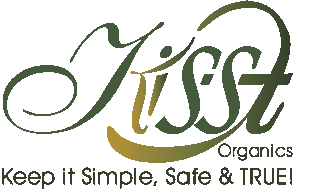Fibromyalgia affects an estimated 10 million people in the United States. Fibromyalgia is classically characterized by chronic pain, particularly muscle pain, restless legs, nerve pain, overall fatigue, sleep disturbances, brain fog or cognitive impairment, depression and painful tender points throughout the body.
Conventional medicine has yet to uncover the cause of fibromyalgia and only offers management of symptoms through pain medications and antidepressants.
Holistic Health Practitioners, on the other hand, looks to find the root cause of fibromyalgia and other chronic diseases, treating the problem at the root level to provide tools to help each individual restore their own health. As a Holistic Health Practitioner, I've helped many people recover from fibromyalgia. Below are the top ten root causes of fibromyalgia and what can be done to overcome them.
1. Gluten intolerance
Gluten has been liked to more than 55 diseases and is often called the "big masquerader." The reason for this is that the majority of gluten intolerance symptoms are not digestive in nature, but are instead neurological, such as pain, cognitive impairment, sleep disturbances, behavioral issues, fatigue and depression.
2. Candida overgrowth
Candida is a fungus, or yeast, and a very small amount of it lives in your intestines. When overproduced, Candida breaks down the wall of the intestines and penetrates the bloodstream, releasing toxic byproducts into your body and causing a host of unpleasant symptoms such as brain fog, fatigue, digestive issues and pain. Virtually every person who has fibromyalgia has or has had a problem with Candida overgrowth.
3. Thyroid
Thyroid gland function also plays an important role in the symptoms of fibromyalgia. Getting thyroid levels into an optimal range typically alleviates many of the symptoms.
4. Vitamin & mineral deficiencies
Magnesium, vitamin D and B12 deficiency are the most common vitamin deficiencies. I have seen some symptoms completely reversed simply changing up the diet and adding vitamin and mineral supplements to help support the body.
5. Small Intestine Bacterial Overgrowth (SIBO) and Leaky gut
There are more bacteria in and on our bodies than the number of our own cells. When bacteria gets out of balance through use of antibiotics or a sugar-rich diet, we can lose our ability to digest and absorb nutrients, particularly B12. This is a vicious circle, gluten can cause SIBO and leaky gut while at the same time SIBO and leaky gut can lead to gluten and other food intolerances. You must first "fix the gut" if you have been diagnosed or suspect that you have fibromyalgia.
6. Mercury toxicity
I recommend that everyone finds a biological dentist and have their mercury amalgam fillings removed. Mercury is toxic to our bodies and can be one piece of the puzzle for those with fibromyalgia.
7. Adrenal fatigue
Adrenal fatigue is a result of the chronic stress. Chronic pain is a stress to the adrenal glands, though it's typically not the initial adrenal stressor. The initial stressor is usually something such as food intolerances, Candida, mercury toxicity, or vitamin deficiencies. I encourage support tof he adrenal glands with adaptogenic herbs.
8. Glutathione deficiency
Glutathione is the most critical part of our body’s detoxification system. Glutathione gets recycled in our body — unless our toxic burden gets too high, or we lack GSTM1 and GSTP1, the enzymes needed to recycle and produce glutathione. Taking glutathione or the precursors (NAC, alpha lipoic acid, milk thistle) often help dramatically with fatigue.
As you can see from the above list, many of these causes are interrelated, and often there is no single root cause of fibromyalgia. Finding the source of the problem can be complex. However, the good news is, you don't need to suffer needlessly or mask your symptoms with pain medications and antidepressants. There are methods to overcome fibromyalgia and live a semi-normal, pain free life.
Veronica
KISST Organics



















